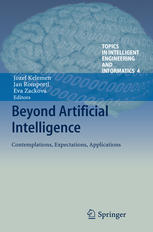

Most ebook files are in PDF format, so you can easily read them using various software such as Foxit Reader or directly on the Google Chrome browser.
Some ebook files are released by publishers in other formats such as .awz, .mobi, .epub, .fb2, etc. You may need to install specific software to read these formats on mobile/PC, such as Calibre.
Please read the tutorial at this link: https://ebookbell.com/faq
We offer FREE conversion to the popular formats you request; however, this may take some time. Therefore, right after payment, please email us, and we will try to provide the service as quickly as possible.
For some exceptional file formats or broken links (if any), please refrain from opening any disputes. Instead, email us first, and we will try to assist within a maximum of 6 hours.
EbookBell Team

0.0
0 reviewsProducts of modern artificial intelligence (AI) have mostly been formed by the views, opinions and goals of the “insiders”, i.e. people usually with engineering background who are driven by the force that can be metaphorically described as the pursuit of the craft of Hephaestus. However, since the present-day technology allows for tighter and tighter mergence of the “natural” everyday human life with machines of immense complexity, the responsible reaction of the scientific community should be based on cautious reflection of what really lies beyond AI, i.e. on the frontiers where the tumultuous ever-growing and ever-changing cloud of AI touches the rest of the world.
The chapters of this boo are based on the selected subset of the presentations that were delivered by their respective authors at the conference “Beyond AI: Interdisciplinary Aspects of Artificial Intelligence” held in Pilsen in December 2011.
From its very definition, the reflection of the phenomena that lie beyond AI must be inherently interdisciplinary. And so is this book: all the authors took part in a mutual transdisciplinary dialogue after explaining their views on AI not only to a narrow selection of their usual close peers with the same specialisation, but to a much broader audience of various experts from AI engineering, natural sciences, humanities and philosophy. The chapters of this book thus reflect results of such a dialogue.